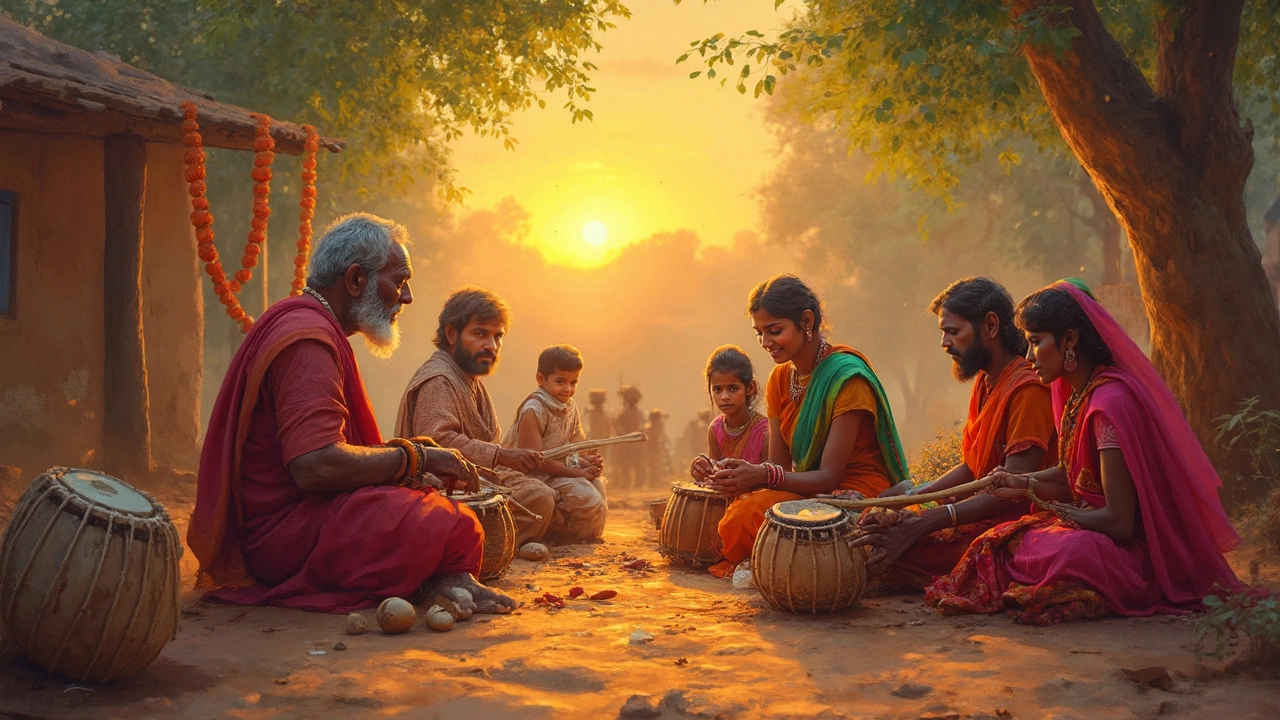
Oldest Folk Music in India: Ancient Traditions, Stories, and Sounds
Travel back to India's ancient roots. Discover the oldest folk music, its origins, stories, and timeless tunes still echoing in villages and celebrations.
India’s music is a mix of melodies, rhythms, and stories that travel across valleys, deserts and cities. If you’re curious about the sounds that shape this mix, this guide will give you the basics you need. We’ll cover the most common instruments, where they come from, and how you can hear or start learning them today.
The sitar is probably the first instrument that comes to mind. It has a long neck, metal strings, and a bright, shimmering tone. You’ll hear it in classical concerts and in film scores that want a dreamy vibe. The sarod is another stringed favorite, with a deeper, more resonant voice that works well for fast, expressive passages.
The veena, especially the South Indian veena, is a large, wooden instrument with seven strings. Its sound is rich and rounded, perfect for devotional songs. If you’re in the Himalayas, you might spot the sarangi, a bowed instrument that mimics human speech and is often used in folk ballads.
For a truly portable option, the ektara is a one‑string instrument used by street performers and wandering bards. It’s simple to play and gives a raw, rhythmic backdrop to storytelling.
The tabla pairs two drums – the higher‑pitched dayan and the lower‑pitched bayan – to create intricate rhythms. It’s a staple in Hindustani classical music and appears in pop songs that need a catchy beat. If you move to South India, the mridangam takes the lead. It’s barrel‑shaped, produces a wide range of tones, and drives the rhythm in Carnatic performances.
Other drums you’ll meet include the dholak, a two‑sided hand drum used in folk dances, and the pakhawaj, a larger drum that predates the tabla and gives a deep, thunderous sound.
Wind instruments add a distinct flavor. The bansuri is a bamboo flute with a soft, airy tone. It’s often used for lullabies and serene pieces. The shehnai, a double‑reed instrument, sounds bright and festive – perfect for weddings and temple ceremonies. In Rajasthan, the algoza (double flute) creates a hypnotic drone that accompanies desert songs.
Most of these instruments have regional versions. For example, the dhol in Punjab is a massive drum played with sticks, while the nagada in Odisha is a smaller, hand‑hit drum used in processions.
Want to hear them live? Look for cultural festivals, classical concerts, or even local temples. Many cities host weekly “music nights” where students showcase their skills on these instruments. Online platforms also stream performances, so you can watch a tabla maestro from the comfort of your couch.
If you’re thinking about learning, start with the instrument that feels most natural. The bansuri and tabla are beginner‑friendly because you can find many tutorials and affordable teachers. For string instruments, a short‑term introductory class can give you a feel for hand positioning before you invest in a full‑size instrument.
Buying advice: go for a reputable dealer, especially for wooden instruments like the sitar or veena. Test the tone, check for cracks, and ask about the wood’s age. For drums, look for sturdy heads and balanced shells – a good tabla will stay in tune longer.
India’s traditional instruments are more than just tools for music; they carry history, culture, and emotion. Whether you’re a casual listener or a budding musician, exploring these sounds opens a window into the country’s vibrant soul. Grab a recording, attend a local event, or pick up a simple instrument and let the music guide you.

Travel back to India's ancient roots. Discover the oldest folk music, its origins, stories, and timeless tunes still echoing in villages and celebrations.